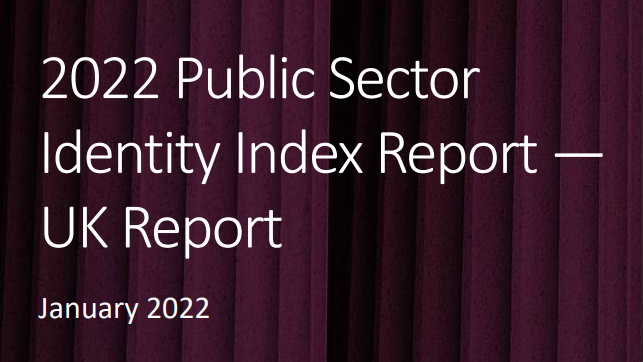LAPSUS$ breached T-Mobile systems, stole source code
T-Mobile has denied that the hackers obtained customer or government information


The LAPSUS$ hacking collective managed to breach T-Mobile systems using employee credentials and downloaded more than 30,000 of the company’s source code repositories.
This is according to evidence obtained by investigative reporter Brian Krebs, who detailed the data breach on his KrebsOnSecurity blog.
LAPSUS$ members accessed T-Mobile's internal company tools on several occasions in March, using T-Mobile VPN credentials purchased through the dark web, including a stolen data trading platform known as the Russian Market.
Conversation screenshots obtained by Krebs show how easy it was for the hackers to find new login credentials in the case that a targeted employee had changed their password, using SIM-swapping to bypass two-factor authentication. LAPSUS$ member ‘Amtrak’ had detailed to a member known as ‘White’, who has been using the Lapsus Jobs account, how they had found a new T-Mobile employee account to target, allowing them to access the company’s Slack communications.
‘White’, also known as ‘WhiteDoxbin’ and ‘Oklaqq’, is an Oxford-based teenager who was one of the LAPSUS$ members arrested and charged in late March. He is believed to be one of the leaders of the hacking group, despite his young age – estimated to be 16 or 17 years old at the time of the attacks.
Screenshots obtained by Krebs seem to hint that the hackers’ legal guardians are aware of criminal activity, with ‘Amtrak’ telling ‘White’: “Parents knkw [sic] I simswap [sic]”.
RELATED RESOURCE

Apart from T-Mobile’s Slack channels and Bitbucket source code repository, LAPSUS$ also managed to gain access to the company’s customer account management platform Atlas.
Get the ITPro daily newsletter
Sign up today and you will receive a free copy of our Future Focus 2025 report - the leading guidance on AI, cybersecurity and other IT challenges as per 700+ senior executives
Despite this, T-Mobile has stated that “the systems accessed contained no customer or government information or other similarly sensitive information, and we have no evidence that the intruder was able to obtain anything of value”.
“Several weeks ago, our monitoring tools detected a bad actor using stolen credentials to access internal systems that house operational tools software. Our systems and processes worked as designed, the intrusion was rapidly shut down and closed off, and the compromised credentials used were rendered obsolete,” the company told KrebsOnSecurity.
This is the third known data breach for T-Mobile in 15 months, following an incident affecting around 200,000 customers in January 2021 and 47.8 million customers in August 2021. The company also fell victim to three other breaches between 2018 and 2020.
Commenting on the news, Mike Newman, CEO of identity & access management (IAM) solution provider My1Login told IT Pro that “this latest breach on T-Mobile is yet another example of how attackers are relying on credential theft to carry out ransomware attacks”.
“Today all ransomware gangs, from BlackCat to LAPSUS$ to DarkSide have been relying on compromised user accounts to gain an initial foothold on an organisation’s network and then turn off security controls, steal data and deploy ransomware. This means to fight back against these attacks we need to focus on improving the security of user credentials and passwords, so they can’t be stolen or socially engineered out of victims in the first place,” he added.
Having only graduated from City University in 2019, Sabina has already demonstrated her abilities as a keen writer and effective journalist. Currently a content writer for Drapers, Sabina spent a number of years writing for ITPro, specialising in networking and telecommunications, as well as charting the efforts of technology companies to improve their inclusion and diversity strategies, a topic close to her heart.
Sabina has also held a number of editorial roles at Harper's Bazaar, Cube Collective, and HighClouds.
-
 Bigger salaries, more burnout: Is the CISO role in crisis?
Bigger salaries, more burnout: Is the CISO role in crisis?In-depth CISOs are more stressed than ever before – but why is this and what can be done?
By Kate O'Flaherty Published
-
 Cheap cyber crime kits can be bought on the dark web for less than $25
Cheap cyber crime kits can be bought on the dark web for less than $25News Research from NordVPN shows phishing kits are now widely available on the dark web and via messaging apps like Telegram, and are often selling for less than $25.
By Emma Woollacott Published
-
 Have I Been Pwned owner Troy Hunt’s mailing list compromised in phishing attack
Have I Been Pwned owner Troy Hunt’s mailing list compromised in phishing attackTroy Hunt, the security blogger behind data-breach site Have I Been Pwned, has fallen victim to a phishing attack targeting his email subscriber list.
By Jane McCallion Published
-
 LinkedIn has become a prime hunting ground for cyber criminals – here’s what you need to know
LinkedIn has become a prime hunting ground for cyber criminals – here’s what you need to knowNews Cyber criminals are flocking to LinkedIn to conduct social engineering campaigns, research shows.
By Solomon Klappholz Published
-
 Phishing campaign targets developers with fake CrowdStrike job offers
Phishing campaign targets developers with fake CrowdStrike job offersNews Victims are drawn in with the promise of an interview for a junior developer role at CrowdStrike
By Solomon Klappholz Published
-
 Iranian hackers targeted nuclear expert, ported Windows infection chain to Mac in a week
Iranian hackers targeted nuclear expert, ported Windows infection chain to Mac in a weekNews Fresh research demonstrates the sophistication and capability of state-sponsored threat actors to compromise diverse targets
By Richard Speed Published
-
 The rise of identity-based cyber attacks and how to mitigate them
The rise of identity-based cyber attacks and how to mitigate themIn-depth If identity-based cyber attacks are successful, they can give hackers the opportunity to infiltrate an entire network
By Sandra Vogel Published
-
 Malware being pushed to businesses by search engines remains a pervasive threat
Malware being pushed to businesses by search engines remains a pervasive threatNews High-profile malvertising campaigns in recent months have surged
By Ross Kelly Published
-
 2022 Public Sector Identity Index Report
2022 Public Sector Identity Index ReportWhitepaper UK Report
By ITPro Published
-
 Modernising identity for a secure, agile hybrid workforce
Modernising identity for a secure, agile hybrid workforceWhitepaper Pave the way towards a modern, secure, efficient, and sustainable hybrid workplac
By ITPro Published